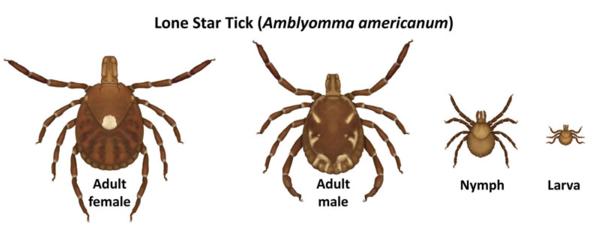
Sporting Dogs and Tick Born Disease

May 1, 2018 by Brad Beaulieu
Sporting dog enthusiasts traveling to various regions of the country may encounter different tick species hosting diseases that can harm canine athletes. Coastland forests, mountain valleys and heartland plains contain different species of flora, wildlife and, unfortunately, ticks.
“Each region has its own tick population, just as each region has its own small mammal population,” says Dr. Rebecca Trout Fryxell, a medical and veterinary entomologist at the University of Tennessee – Knoxville.
Being aware of various tick species, the tick-borne diseases they carry and taking precautions will help ensure the safety of your dog.
Ehrlichiosis
Caused by Ehrlichia canis bacteria and transmitted by the distinctly white-backed lone star tick, as well as the American dog, brown dog, black leg and Gulf Coast ticks, ehrlichiosis is most prevalent in the Southeastern United States. Affected dogs may be feverish, lethargic and experience loss of appetite, says Trout Fryxell.
Ehrlichiosis, which is often misdiagnosed as Lyme disease, may also be on the rise in the Northeastern United States as lone star ticks become more prevalent. Antibiotics are used to treat the disease, and steroids may be prescribed for severe cases. Two to 3 percent of the tick population carries the Ehrlichia bacteria, Trout Fryxell says.
Rocky Mountain Spotted Fever
Carried by the American dog tick and Rocky Mountain wood tick, cases of Rocky Mountain spotted fever are found throughout the contiguous United States and are especially prevalent in the West. Signs include nausea and stiffness while walking. Dogs should always be checked for ticks after leaving tick-heavy areas.
“Canines can’t really tell us how they’re feeling, so veterinarians must diagnose based on other factors, such as temperature and blood tests,” says Trout Fryxell.
Various bleeding problems can occur if Rocky Mountain spotted fever is not treated. Swift antibiotic treatment is suggested in order to reduce the risk of mortality.
Heartland Virus
Discovered just a few years ago in northwestern Missouri, the Heartland virus has made headlines for causing human fatalities in that state as well as Oklahoma. The virus has been found in lone star ticks native to this region. Ticks carrying the virus have been found on dogs, but there have not been reported cases or canine deaths attributed to it. “A reason for this may be because testing methods are still being developed,” Trout Fryxell says.
Signs are similar to ehrlichiosis, and because it is a virus, antibiotics are not effective in treating it. According to the Centers for Disease Control and Prevention (CDC), eight human cases have been identified, but it is not yet known whether dogs can become infected by Heartland virus. Research is underway at the CDC to examine Heartland virus in dogs and livestock. The CDC recommends consulting your veterinarian if your dog exhibits any concerning signs.
“It’s still a legitimate concern in the Midwest because there have been some fatalities associated with that virus and we just don’t know a lot about it yet,” Trout Fryxell says.
Awareness and taking proper safety measures will help prevent tick-borne diseases from affecting your dog, giving you more enjoyable days together in the field.
Steps for Prevention
When you’re outdoors with your dog, and it’s not possible to avoid areas prone to tick populations, Dr. Rebecca Trout Fryxell, a medical and veterinary entomologist at the University of Tennessee – Knoxville, suggests following these steps to decrease the chance of you and your dog developing a tick-borne disease.
- Be aware: “Mosquitos remind you that they are there, whereas a tick doesn't. Just being aware and knowing that you could be encountering ticks is the best thing you can do.”
- Use treatments and preventive medicines: “You can apply repellants to yourself and to your dog. Some topical insecticides and preventive oral medicines can be used at the same time. Consult your veterinarian to see which ones can be safely used together.”
- Check yourself and your dog when finished in the field: “You can’t always see ticks latch under the fur of an animal, so you should watch for a change in the behavior of your dog. If you notice your dog goes from happily running around in the woods to being lethargic, seek veterinary attention.”
Posted In: Gun Dog Information
